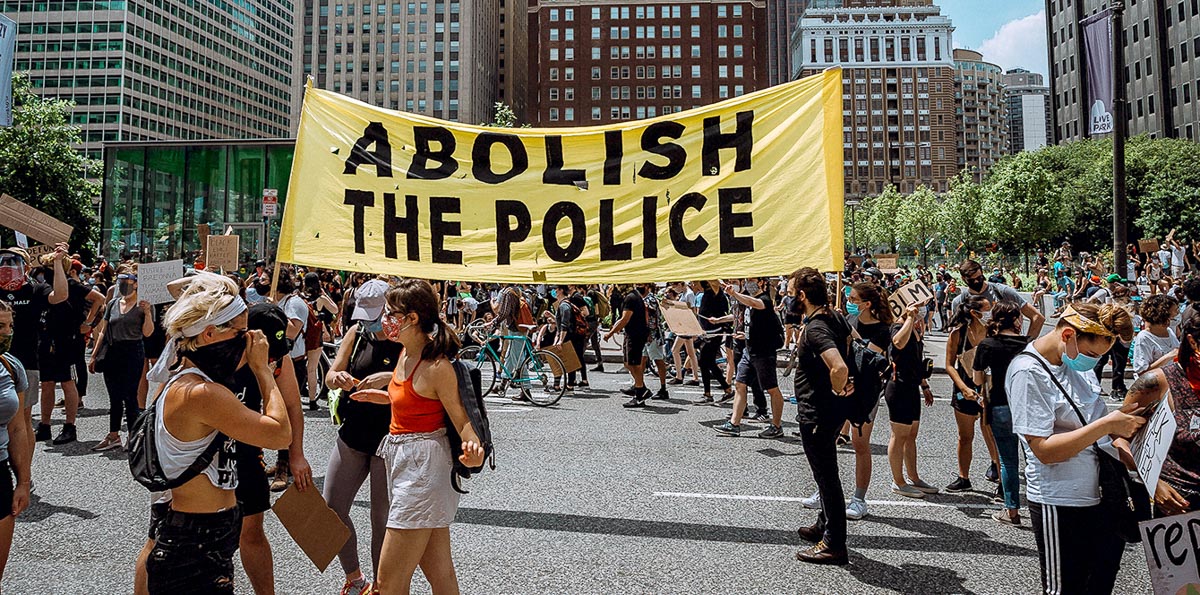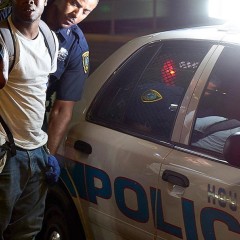“Who are the police?”
This is the second of two blog posts that offer up recommended reading focused on the culture of police organizations. I chose the readings in this post, as well as the first, because they help answer core questions about what the police do. Collectively, I hope these suggestions inspire thinking about ways to change policing in Houston by identifying the problems and challenges of patrol police work. While I do not provide ideas for specific reforms or changes, I conclude this piece with a call for more transparency and research partnerships with police departments.
Here’s Part 2 of the reading list:
“Police: Mandate, Strategies, and Appearances,” by Peter K. Manning (1978)
Peter K. Manning could be called a police skeptic. In this excerpt, he argues that police cannot do their job, largely because they have a set of professional responsibilities — a mandate — too wide for any single organization to handle. For example, municipal police are expected to calm people having mental health episodes, perform undercover drug sales, rescue cats from trees, chase speeding cars, help stop a broken water main, investigate homicides using high-tech biometric tools, direct traffic after a high school football game and accurately shoot a handgun with the intent to kill.
Fundamental to this broad mandate is the need to maintain “law and order.” Yet that job is a paradox: perfectly enforcing order would require stomping on people’s legal rights.
Obnoxiousness is not inherently criminal, nor should it be. Likewise, enforcing the black letter of the law would fray the political order. For example, imagine if the police arrested everyone who illegally streamed copyrighted pornography or music, which are felonies. Police selectively choose which laws to enforce. To help hide the “law and order” paradox, while still maintaining their broad mandate, the police craft a public-facing image characterized by secrecy, machismo and the strategic use of information (like crime statistics).
The police present their patrol work as dangerous, when in reality it often entails a lot of boredom and time spent sitting in a car and responding to occasional 911 calls, many of which aren’t “actual” emergencies. The police prevent their professional mandate from fraying through a careful, ongoing public performance of their legitimacy — a legitimacy being loudly challenged at this specific time in history.
In his long career, Manning has produced a lot of writing, but this one is the most succinct (though more “academic” in tone than the other suggested readings in these blog posts) and my favorite. This article, found in “Policing: A View from the Street,” is frequently anthologized in criminology textbooks. His commentaries on 911 and dispatch (which structure the majority of patrol police work, and frankly are poorly understood given their importance) and police statistics are valuable.
“Order Maintenance Policing,” by David Thacher (2014), from “Oxford Handbook of Policing”
Thacher’s chapter, which is relatively easy to find online or at the library, is my favorite reflection on the subject of policed “order.” Order maintenance policing was the backbone of the famous “broken windows thesis,” which big-city police departments folded into their strategies in the 1980s and 1990s.
Popularized by a 1982 Atlantic article, criminologists James Q. Wilson and George L. Kelling argued that policing public disorder (i.e., “fixing broken windows”) would help decrease crime. Since vandalism and graffiti could lead to more severe crimes, police across the country responded more harshly to these offenses through “broken windows policing,” generating a backlash and a cottage industry (in criminology academia) of debating whether the broken windows thesis was actually true.
Thacher, however, pivots away from the broken windows debate and invites us to consider the core of “order” and how to police it. What constitutes public “disorder” is wide ranging and subjective: a loud car stereo, a person having a mental health episode in public or a garish lawn sign could all be called “disorderly.”
Thacher gives a useful definition of “order maintenance policing,” which he defines as “regulat[ing] the fair use of public spaces” (139). (The overlap of concern with urban planning practice should appear evident). He illustrates how changes in legal precedent (such as the Papachristou v. City of Jacksonville Supreme Court case in 1972, which outlawed vagrancy statutes) has caused police tactics to shift, yet officers must continue to rely on personal discretion and their ability to legally detain people.
The work police is complicated by the fact that they are called to address disorderly activities, even though many are not illegal per se. And the most special professional privilege police possess is their ability to arrest and detain people.
Ultimately, the debate about “order maintenance,” Thacher concludes, is a moral one. “Disorder” is a political and values-laden label, and it depends on context. What’s disorderly in some places is normal in others.
Rather than addressing vandalism, public drunkenness or mental health crises under the vague umbrella of “order maintenance,” and dispatching someone with a gun and handcuffs to diffuse these unpredictable situations, he suggests that policymakers should craft strategies to address specific issues. In a sense, the purpose of order maintenance policing is to help people live together, a point to which I will return.
“Down and Out and Under Arrest: Policing and Everyday Life in Skid Row,” by Forrest Stuart (2017)
Disclaimer: I have not yet finished this book! However, I wanted to include it because it helps illustrate the many paradoxes touched on above by grounding them in a specific setting and issues: policing homelessness in Los Angeles’ Skid Row neighborhood.
Like Houston’s downtown area and other neighborhoods in the city, Skid Row has a large homeless encampment. In the 1980s and 1990s, police in large cities sought to remove these types of encampments through aggressive measures, including destroying homeless people’s personal property.
Stuart investigated the so-called “softer” approach used in contemporary Los Angeles, where the police teamed with private social service agencies to implement the “Safer Cities Initiative.” Police deployed through the initiative had the ability to divert homeless people to targeted recovery and therapy programs, which often involved “life skills” training through volunteer work. Homeless people caught doing illegal things, such as public urination or selling items without a license, could go to these programs and avoid receiving a citation.
Home people’s extended participation could yield a low-paying job or a space in a temporary shelter. Effectively, the police were empowered to act as de facto therapists. (This program is not dissimilar to HPD’s Homeless Outreach Team or the type of work done by the Downtown Public Safety Guides).
However, by Stuart’s assessment, the program fell short. Police became embittered — they knew they couldn’t fix homelessness, yet were tasked with doing that — and the homeless residents found the program dehumanizing. They developed strategies to feign participation in order to reap the program’s benefits, such as avoiding citations.
The book is a pessimistic treatment of police’s ability to treat homelessness, and Stuart advocates for increased investment in public housing and structural reforms to address mass immiseration. Like Manning, Stuart argues the police are asked to do too much, and he would perhaps agree with Thacher when citing the need to narrow the problem of “homelessness” into more specific interventions like affordable housing.
Learning about police culture from abroad
While I have not studied policing outside the U.S., the main police scholar on my dissertation committee — Jeffrey Martin — researches policing in east Asia. Martin introduced me to several of the readings I’ve recommended in this list years ago. His recent book, “Sentiment, Reason, and Law,” draws on years of ride-alongs with patrol police in Taiwan.
In the book, which is part of Cornell Press’s Police/Worlds series, Martin argues that a core police function is to help a community live together when a unified political will does not exist — as was notably the case in post-authoritarian Taiwan. Police must craft the collective will for people to live together. As it is an anthropological ethnography, the book is a mixture of theory and engaging vignettes about the daily work of Taiwanese police.
As Martin shows, the police adeptly manage and negotiate the different demands of organized crime, government officials and the working poor, managing to maintain political order in the context of a weak state.
Didier Fassin’s “Enforcing Order” draws on Fassin’s time spent riding along with an elite anti-crime unit in Paris’s predominately non-white and Muslim suburbs. The book is the most galling scholarly police work I have read. Fassin reflects on the recklessness and abuse he saw displayed by the police during his research, and his book will obliterate the naive notion that police abuse is only a problem in the U.S.
Cecilia MacDowell Santos’ “Women’s Police Stations” focuses on women-only police stations in Brazil. Started in Brazil in the 1980s — and now common across Latin America — these women-staffed police stations specifically investigate gendered crimes such as domestic abuse and sexual assault.
Lastly, if you want to explore contemporary academic debates in Human Geography about policing (and have academic journal access), Environment & Planning: D, recently released a special issue on policing ethnographies, all of which draw from non-U.S. research.
There’s a need for more police research
Urban uprisings in the 1960s and the subsequent Kerner Commission opened up police departments for more research. The federal government seemed to grasp that fundamental changes were needed in American policing and funded research into their daily operations. In the 1970s and 1980s, academics produced a lot of crucial work about police; this often involved the researcher spending extensive time with officers during their daily patrol work, in a quasi-anthropological setting. But that is no longer the case. Police departments (perhaps understandably) seem reluctant to open their internal operations to critical researchers.
Sometimes — though rarely — officers themselves are the researchers. Peter Moskos’s “Cop in the Hood” and Jonathan Wender’s “Policing and the Poetics of Everyday Life” are two excellent examples of “Ph.D. cop” books. (I especially enjoy Wender’s eclectic book, which draws on art history and aesthetic theory to help explain patrol work).
This enclosure has different effects on police research. Those who join police patrols or investigators for research likely are those who are comfortable within that world (to wit, most of the authors I recommended are male and white, though some did research in predominately non-white departments). Many of the most influential criminal justice journals publish mostly quantitative, statistical research. This aggregate statistical research provides less of an intensive insight into officers’ everyday feelings and judgments, which often are central to good anthropological and ethnographic research.
Perhaps the recent protests will spur more funding for critical research, but that will require the cooperation of police departments. As the police’s job entails helping diverse people live together, I am cautiously optimistic that the current crisis will encourage them to open their doors to critical research.


